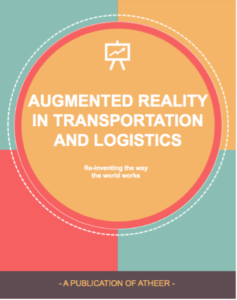The Challenges of Augmented Reality
However, developing and managing AR applications is not simple. Typically it requires companies to hire developers with specific programming expertise, which generates significant additional costs. New cloud technologies can provide a solution to this problem by lowering the barriers to entry to AR development.
The technology required to operate well-connected AR platforms also requires a combination of machines, data intelligence and product level. It is therefore critical to continuously iterate development, simulation, validation, management analyzing assets and feedback insights.
There are a growing number of examples of exciting AR applications in the context of Industry 4.0:
Internet of Things Data Visualization
With AR applications for IoT data visualization, employees can simply hold a mobile camera over a specific node on a machine to reveal real-time data on its operations, such as temperature, electricity flow and power levels—thus increasing work efficiency and making diagnosis of problems easier.
AR Manuals
Vehicle manufacturers are already providing car owners with AR manuals for minor repairs and maintenance. Instead of thick paper manuals, users can access visualized graphic information about their vehicle using a smartphone or tablet. The devices use AR to instantly detect car parts and label them in real time and then provide video instructions for repairs or explanations of how to use the various buttons on a car’s dashboard.
AR Remote Support
AR-based video calls using smart glasses and mobile devices are emerging as a means of improving communication between employees in various industries. The application can superimposeinstructions onto a worker’s field of vision, using real-time AR drawing, messaging, shared multimedia content and features that allow for instructions to be given remotely. This increases communication efficiency and reduces overall operation times, while improving the safety of procedures in hazardous environments where it is important to have two hands free.
Can Cloud Technology Lower the Barrier to Entry?
As the market grows, more technology will emerge and enhance current manufacturing practices. But developing and operating such technologies is not an easy task. Currently, there is a high barrier to entry for creating AR applications, as they must be designed by people with a comprehensive knowledge of software development. The top AR software development kits (SDK) belong to tech organizations that already possess a deep understanding of 3D application development.
Cloud technology can provide companies with a solution to this problem, in the form of an easy-to-use online platform that integrates various AR applications for industry.
The biggest advantage of the cloud-based solution is that enterprises can leverage AR technology expertise via software without introducing new infrastructure. That means there is no need to pay for expensive new hardware or AR development tools and no need to hire a team of developers.
Just as some companies have given ordinary people the tools to create websites without prior coding expertise, cloud platforms will eliminate the entry barriers for AR application development and expand the target user base to include general designers or marketers without knowledge of programming languages.
Once the software is installed, cloud platforms will enable users to easily manage and modify a company’s AR applications online, using drag-and-drop interfaces and a comprehensive media content library. Such technology has the potential to completely convert the developer-oriented AR SDK ecosystem into a SaaS AR platform, providing a holistic AR experience with subscription-based software on the cloud.
Staying Ahead of the Game
As Industry 4.0 technologies accelerate production lines and enhance company-consumer interactions, keeping up to speed with new developments in AR will be pivotal to remaining competitive in the manufacturing industry.
Using cloud platforms, companies can simultaneously increase production efficiency while reducing overhead associated with developing the latest technologies. The cloud thus represents a powerful tool for staying ahead of the game and remaining at the forefront of innovation. We are without a doubt in the process of a major industrial transformation. Now is the time for companies to put in place the necessary structures to take advantage of it.
The AREA has resources on barriers to entry in enterprise AR.
AREA Security Committee Webinar – Overcoming Barriers to AR Project Implementation: A Security Perspective
AWE Europe 2018: Latest AREA Research & How its Reducing Barriers to AR Adoption









